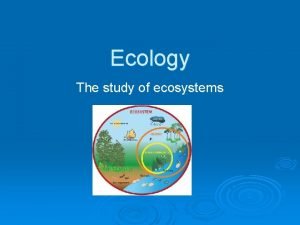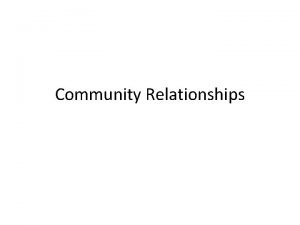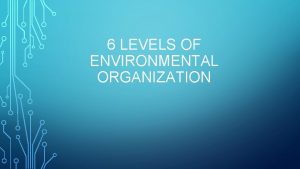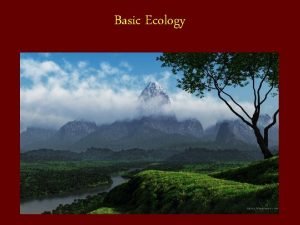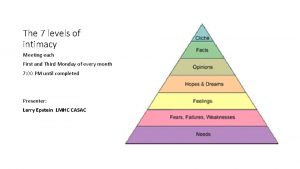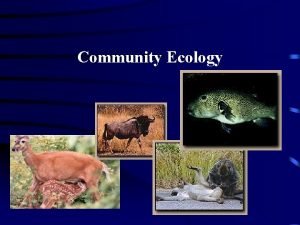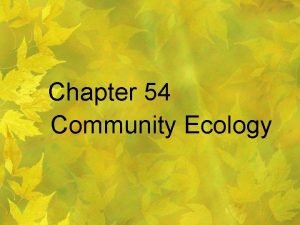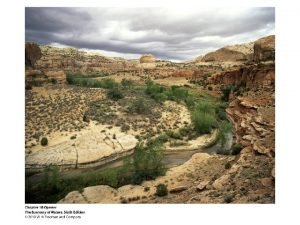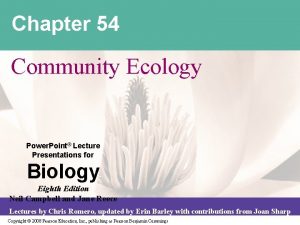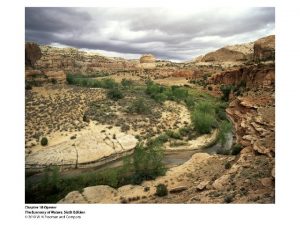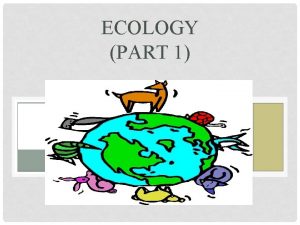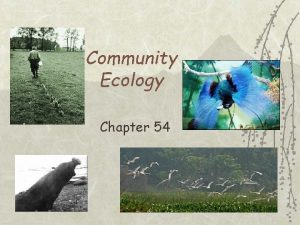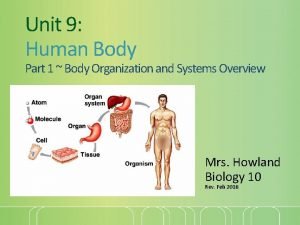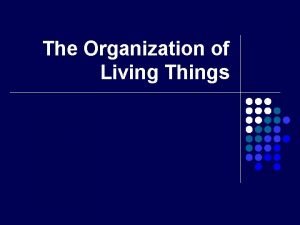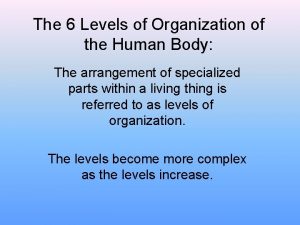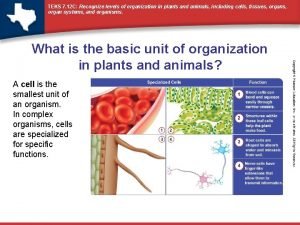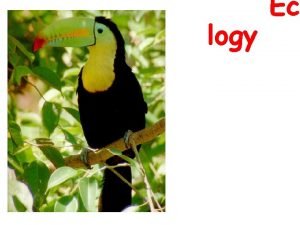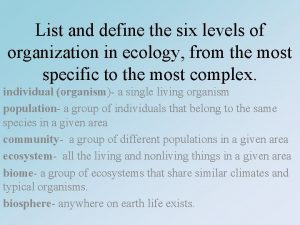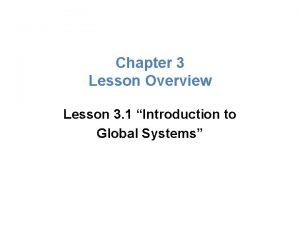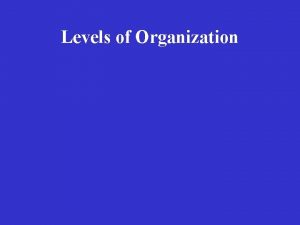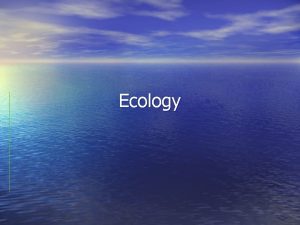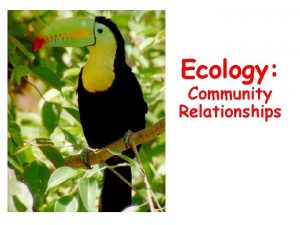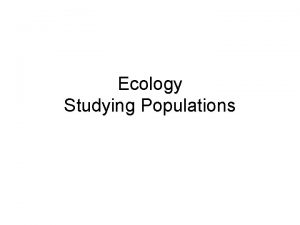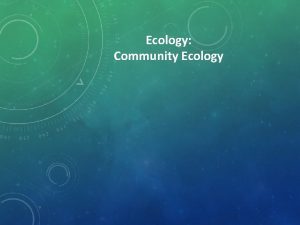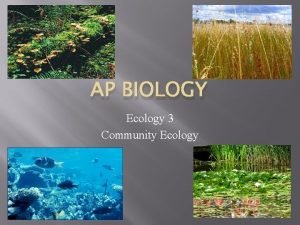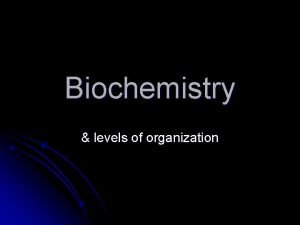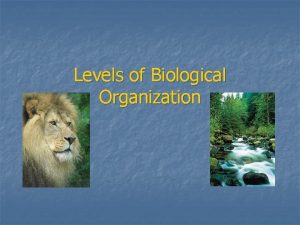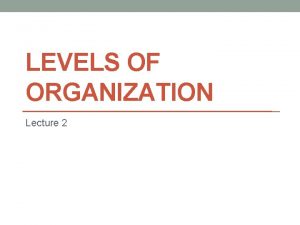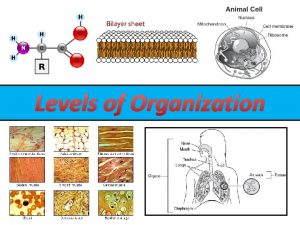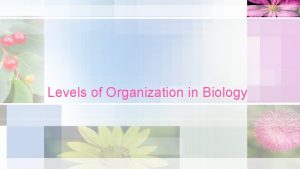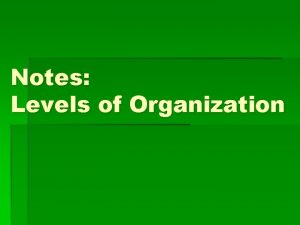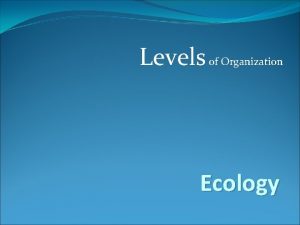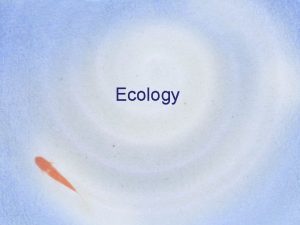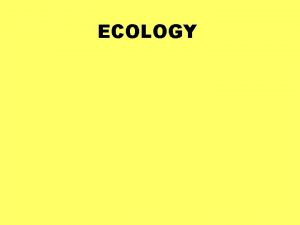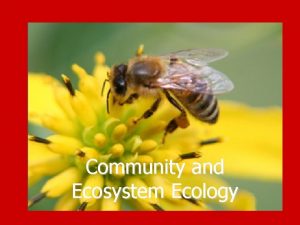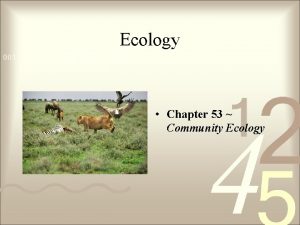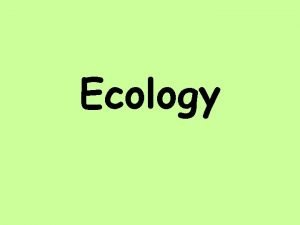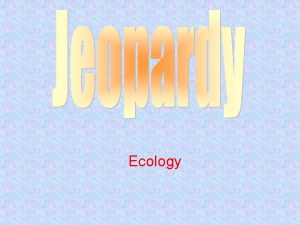Community Relationships Ecology Levels of Organization Ecology Is































- Slides: 31

Community Relationships

Ecology & Levels of Organization • Ecology – Is the scientific study of the interactions between organisms and the environment • Organisms and their interactions with one another and the environment have led scientists to organize nature into different levels as follows: – – – Organism Population Community Biome Ecosystem Biosphere

Organism - an individual animal, plant, or single-celled life form An organism’s job in a community is called its niche. Organism

Population - the collection of organisms of a particular species, living in a given geographic area or space Population

Community - various collections of organisms sharing an environment Community

Biome - is a major regional group of distinctive communities best adapted to the region's physical natural environment, latitude, elevation, and terrain. (ex: savanna, steppe, prairie) Biome

Ecosystem - the collection of biotic (living) and abiotic (nonliving) components and processes in one particular area of the biosphere Ecosystem

Biosphere - the outermost part of the planet's shell — including air, land water — within which life occurs Biosphere

Habitat vs. Niche • Different Species have different niches. • A niche is the organism’s “Job”: – What does it contribute to the community? • • • It can absorb sunlight to produce food for others. It can be preyed upon by others. It can be parasitized by others. It can go to the bathroom and fertilize the ground. It can die and its body will go back to the earth. • Niche is different than habitat, because habitat describes the conditions in which the organism lives. A niche describes the organism’s purpose. • Niche is often described by an organism’s relationship with other organisms in the community.

Organisms Can Have Symbiotic Relationships – Symbiosis – a relationship where two species live closely together • Mutualism – Symbiotic relationship in which both species benefit from the relationship

Ant-aphid mutualism: the aphids are protected against predators by the ants who cultivate the aphids for their secretions of honeydew, a food source.

The Roridula gorgonias plant is sticky and captures bugs, but does not eat the bugs. This bug eats the captured bugs and its feces fertilizes the soil and feeds the plant.

Students Should Be Able to Identify and Describe Symbiotic Relationships – Symbiosis – a relationship where two species live closely together • Mutualism – Symbiotic relationship in which both species benefit from the relationship • Commensalism – Symbiotic relationship in which one organism benefits and the other organism is neither helped nor harmed

A small copepod crustacean (note paired egg sacs) on Phyllidia

The commensal shrimp Periclimenes imperator on Chromodoris tinctoria

Students should be able to identify and describe symbiotic relationships – Symbiosis – a relationship where two species live closely together • Mutualism – Symbiotic relationship in which both species benefit from the relationship • Commensalism – Symbiotic relationship in which one organism benefits and the other organism is neither helped nor harmed • Parasitism – Symbiotic relationship in which one organism lives in or on another organism (the host) and consequently harms it

Mites parasitising a harvestman.

This plant is a Holoparasite; a plant that is completely parasitic on other plants and has virtually no chlorophyll.

Organisms can have Predator/Prey relationships • Many predators specialize in hunting only one species of prey. – The specialists are usually particularly well suited to capturing their preferred prey. – The prey in turn, are often equally suited to escape that predator. – This tends to keep the populations of both species in equilibrium. • Other predators are more opportunistic and will kill and eat almost anything.

Specialist Predator

Specialist Predator

Opportunistic Predator

Opportunistic Predator

Prey/Predators Continued • When hunger is not an issue, most predators will generally not seek to attack prey because it costs them too much energy. – (This is why sharks in an aquarium will not attack the fish in the tank)


Prey/Predators Continued • Predators at the top of the food chain (such as large sharks, crocodiles, and humans) are called the apex predators and can often greatly affect the food chain beneath them. – Species that have a strong influence on the food chain are called keystone species.

The Clean Up Crew • And of course, you have to have organisms that return dead organisms back to the eart: – Scavengers eat freshly dead material, like opossums and buzzards. – Detritivores eat detritus (decaying matter), like maggots. – Decomposers complete the conversion of organic material to the earth; like bacteria and fungus(mold).

The Food Chain Energy Comes to Earth Energy is Absorbed by Plants Primary Consumer Producer Secondary Consumer Tertiary Consumer

Quaternary Consumer Tertiary Consumer Secondary Consumer Primary Consumer Producer

Decomposers

Energy Pyramid
 Levels of organization ecology
Levels of organization ecology Symbiotic relationship
Symbiotic relationship 5 levels of environmental organization
5 levels of environmental organization Principles of ecology chapter 2 answer key
Principles of ecology chapter 2 answer key Principles of ecology organisms and their relationships
Principles of ecology organisms and their relationships Four levels of ecology
Four levels of ecology Levels of intamacy
Levels of intamacy Example of a level 3 question
Example of a level 3 question 52
52 Ecosystem vs community
Ecosystem vs community Community ecology
Community ecology Chapter 3, section 1: community ecology answer key
Chapter 3, section 1: community ecology answer key Chapter 54 community ecology
Chapter 54 community ecology Evolution and community ecology guided notes
Evolution and community ecology guided notes Definition of community ecology
Definition of community ecology Chapter 54 community ecology
Chapter 54 community ecology Chapter 5 evolution and community ecology
Chapter 5 evolution and community ecology Ecosystems interactions
Ecosystems interactions The definition of community
The definition of community Community ecology
Community ecology Ecology part 1
Ecology part 1 Chapter 54 community ecology
Chapter 54 community ecology Levels of organization in the human body
Levels of organization in the human body Organization of living creatures
Organization of living creatures 6 levels of organization
6 levels of organization Plant organization levels
Plant organization levels Organismal level
Organismal level K strategist curve
K strategist curve In what ways are herbivores and carnivores alike?
In what ways are herbivores and carnivores alike? Levels of organization nonliving
Levels of organization nonliving Levels of organization in an ecosystem
Levels of organization in an ecosystem Chapter 3 lesson 1 introduction to global systems
Chapter 3 lesson 1 introduction to global systems
